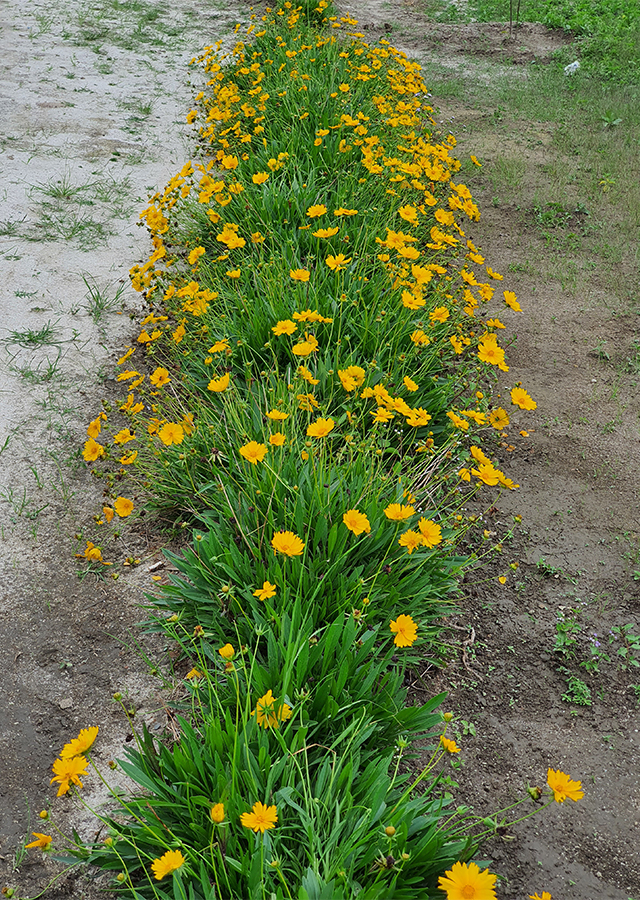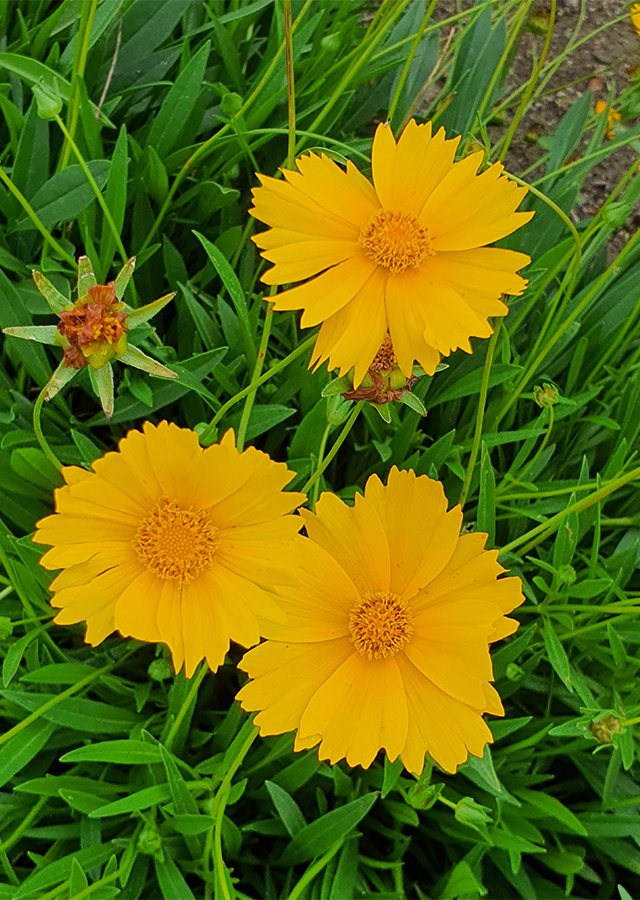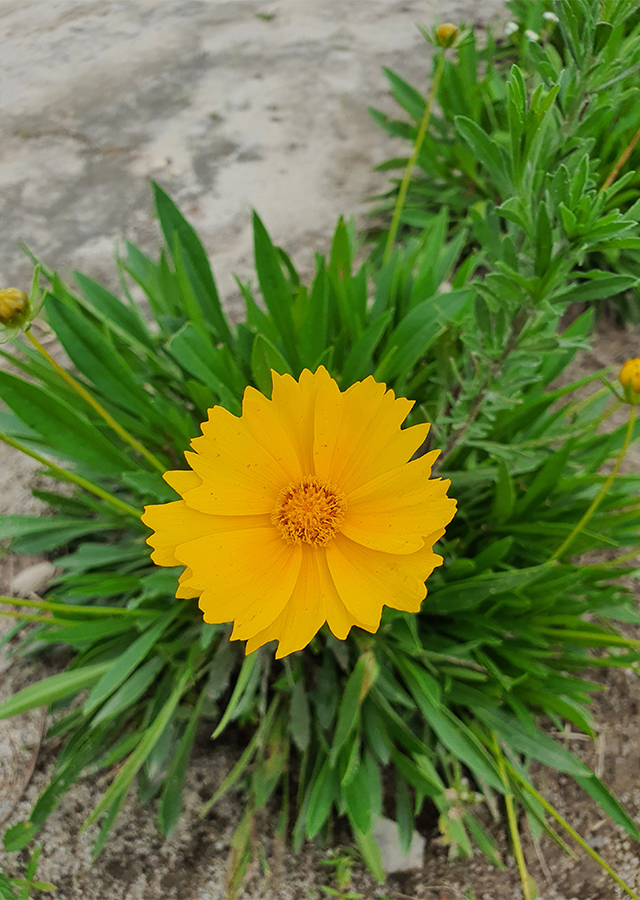Traditional Herbs from Coreopsis lanceolata
woman_who_wants_to_conceive_a_female_baby
- Take all the parts of the yellow lace flower plant as needed except the roots, wash them thoroughly.
- Soak them in water, wait for some time or approximately 10 hours.
- Strain then drink the water.
diarrhea
- Prepare enough yellow lace flower roots, wash them thoroughly.
- Brew them with hot water.
- Wait a few moments until the water cools or changes color.
- Strain then drink.
What is Coreopsis lanceolata Looks like??



Parts of Coreopsis lanceolata that could be used
- Flowers", "Roots", "All Parts of the Plant
Coreopsis lanceolata Distribution
Coreopsis lanceolata is a plant endemic to the north of the American continent. This species can be found from the South Pacific Coastline of Alaska, throughout the United States, Canada and Mexico except the highland areas of the Rocky Mountains. This species is also widely distributed in pantropical areas, and has become naturalized in Japan. This species produces beautiful, striking yellow flowers, and is widely planted as an ornamental plant in yards and used as cut ornamental flowers. Based on research results, it is known that C. lanceolata flowers have various biological activities. Because of the properties of C. lanceolata, this species has been used traditionally as an ingredient in herbal medicine, such as traditional medicine to reduce fever in China and East Asia.Agroecology of Coreopsis lanceolata
Coreopsis lanceolata is usually found growing in open forests, grasslands, savannas, and disturbed areas. Often found forming quite large colonies along roadsides and in old fields. Likes places with conditions that get direct sunlight to partial shade. Able to grow well in sandy, clayey and poorly drained soil, it is also able to grow well in soil with poor conditions (infertile). Its growth requires soil with a slightly acidic to neutral degree of acidity (pH) (6.0 - 7.0), and has tolerance to heat, humidity and drought (medium level).
Morphology of Coreopsis lanceolata
- Slender stem, branched at the base.
- Basal leaves, opposite, sometimes alternate, elliptical to linear, green in color, flat leaf margins. Some leaves are deeply cut, almost forming 3 leaves leaves.
- Solitary, daisy-like flowers with eight yellow ray flowers (notched or serrated tips with three to five shallow notches) surrounding numerous disk flowers. The center of the yellow flowers or disk flowers stands out clearly. The petals are green.
- The seeds are shaped like fleas.
Cultivation of Coreopsis lanceolata
Propagation is done using seeds and dividing the clump.
Coreopsis lanceolata, more details :
Chemical Content of Coreopsis lanceolataPhenolics, flavonoids (aurones, chalcones, flavones, flanavol, luteolin, quercetin), polyacetylene glycosides, lanceoletin, 3,2′-dihydroxy-4-3′-dimethoxychalcone-4′-glucoside, 4-methoxylanceoletin, lanceolin, leptosidine, (2R)-8-methoxybutin, bidenoside C, (3S,4S)-5E-trideca-1,5-dien-7,9,11-triyne-3,4-diol-4-O-β-glucopyranoside.
Benefits of Coreopsis lanceolata
Reduces fever, used by women who want to conceive a baby girl, treats diarrhea. Has anticancer, anti-inflammatory, antioxidant, anti-allergic, anti-leukemic activity.
Simplisia of Coreopsis lanceolata
- Prepare the yellow lace flower plant, wash it thoroughly with running water and then drain it.
- Dry it in the sun or in an oven at a temperature\u00a040\u00b0C until the water content\u00a010%.
- Clean it using a blender until it becomes powder, then sift with a 60 mesh sieve.
- Store in a clean and airtight place.
Another Facts for Coreopsis lanceolata :
Synonym of Coreopsis lanceolataChrysomelea lanceolata Tausch, Coreopsis crassifolia Aiton, Leachia lanceolata (L.) Cass., �
Habitus of Coreopsis lanceolata
Herb. Annual herb, between 30 - 75 cm high
Habitat of Coreopsis lanceolata
- Forest
- Roadside
- Grassland
No comments:
Post a Comment